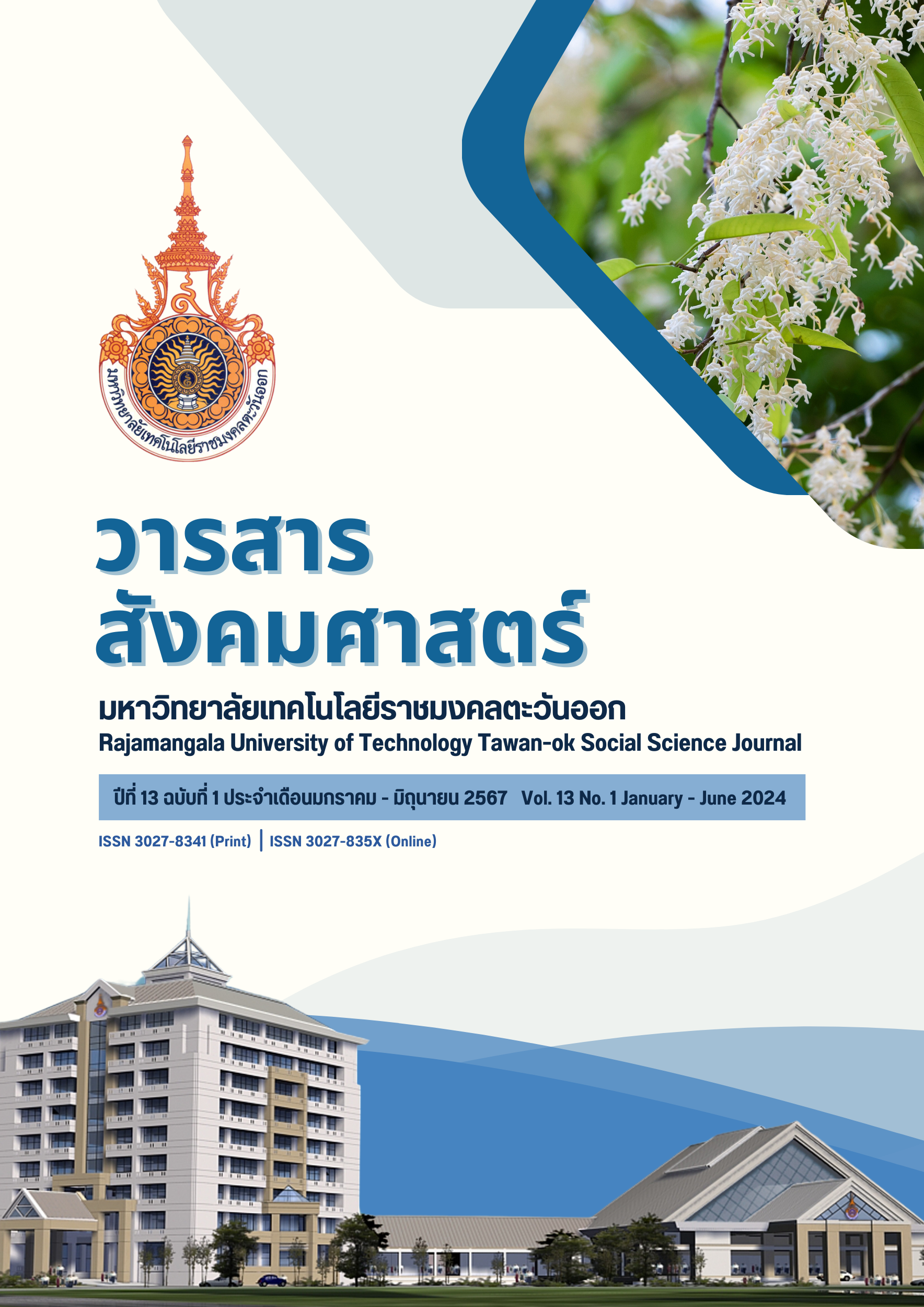Rethinking Digital Access in Thailand
Main Article Content
Abstract
Despite widespread internet connectivity in Thailand, a significant digital divide persists, necessitating a reevaluation of digital access within the country. This study aims to achieve two main objectives: 1) to analyze the impact of socio-demographic factors on material access and 2) to investigate the influence of these factors on physical access to the Internet. The data for this research was sourced from Thailand’s National Statistical Office's 2020 Household Survey on the Use of Information and Communication Technology. The survey included respondents aged 18 to 75 years living in Thailand. To explore these objectives, logistic regression analysis was employed to examine the effects of socio-demographic variables on both material and physical dimensions of internet access.
The findings highlight significant correlations between individuals' socio-demographic characteristics and their digital access experiences in Thailand. Specifically, factors such as gender, age, employment status, and education level influence both material access (ownership of devices like desktop computers, laptops, tablets, smartphones) and physical access (internet access at home, workplaces, educational institutions, others’ residences, public service centers, and private service centers). Despite the prevalent availability and connectivity of the internet across Thailand, the digital divide remains evident. This research offers crucial insights into the disparities faced by different socio-demographic groups, particularly the so-called "mobile underclass." The persistence of these disparities underscores the urgent need for targeted interventions and policies to address and bridge the digital divide in Thailand.
Article Details

This work is licensed under a Creative Commons Attribution-NonCommercial-NoDerivatives 4.0 International License.
References
Comi, M., Smith, S., Goettlich, W. A., Alexander, P., Davidson, D., & Staples, W. G. (2022). Digital Home-lessness: Exploring the Links between Public Internet Access, Technological Capital, and Social Inequality. Current Sociology, 70, 1-18.
Dutton, W. H., & Reisdorf, B. C. (2019). Cultural Divides and Digital Inequalities: Attitudes Shaping Internet and Social Media Divides. Information, Communication & Society, 22(1), 18–38.
Gonzales, A. (2016). The Contemporary US Digital Divide: From Initial Access to Technology Maintenance. Information, Communication & Society, 19(2), 234–248.
Hargittai, E. (2002). Second-level Digital Divide: Differences in People’s Online Skills. First Monday, 7(4).
Hargittai, E., Piper, A. M., & Morris, M. R. (2019). From Internet Access to Internet Skills: Digital Inequality Among Older Adults. Universal Access in the Information Society, 18(4), 881–890.
Imran, A. (2023). Why Addressing Digital Inequality should be a Priority. The Electronic Journal of Information Systems in Developing Countries, 89(3), e12255.
Kamga, B. F., Fokam, D. N. D. T., & Nchofoung, T. N. (2022). Internet Access and Innovation in Developing Countries: Some Empirical Evidence. Transnational Corporations Review, 0(0), 1–11.
Lopez-Sintas, J., Lamberti, G., & Sukphan, J. (2020). The Social Structuring of the Digital Gap in a Developing Country. The Impact of Computer and Internet Access Opportunities on Internet Use in Thailand. Technology in Society, 63, 101433.
Mossberger, K., Tolbert, C. J., & Hamilton, A. (2012). Measuring Digital Citizenship: Mobile Access and Broadband. International Journal of Communication, 6, 2492-2528.
Norris, P. (2001). Digital Divide: Civic Engagement, Information Poverty, and the Internet Worldwide. New York: Cambridge University Press.
Napoli, P.M. & Obar, J.A. (2014). The Emerging Mobile Internet Underclass: A Critique of Mobile Internet Access, The Information Society, 30(5), 323-334.
OECD. (2001). Understanding the Digital Divide, OECD Digital Economy Papers, No. 49. Paris: OECD Publishing.
Puey Ungphakorn Institute for Economic Research (PIER). Mobile Underclass: A Challenge for the Development of Digital Economy in Thailand. Retrieved 1 October 2022, from https://www.pier.or.th/exchanges/2021/14/
Rafiq, M., Batool, S. H., Ali, A. F., & Ullah, M. (2021). University Libraries Response to COVID-19 Pandemic: A Developing Country Perspective. The Journal of Academic Librarianship, 47(1), 102280.
Sukphan, J., & Kitdamrongtam, P. (2022). Information Communication Technologies in Thailand: The Influence of Social Structure and the Autonomy of Use. Asian Review, 35(2), 78–94.
van Deursen, A. J. A. M., & Helsper, E. J. (2015). The Third-level Digital Divide: Who Benefits Most from Being Online? Communication and Information Technologies Annual, 10, 29–52.
van Deursen, A. J. A. M., & van Dijk, J. A. G. M. (2019). The First-level Digital Divide Shifts from Inequalities in Physical Access to Inequalities in Material Access. New Media & Society, 21(2), 354–375.
van Dijk, J. A. G. M. (2005). The Deepening Divide: Inequality in the Information Society. London, UK: SAGE Publications.
van Dijk, J. A. G. M. (2020). The Digital Divide. Cambridge, UK: Polity Press.


